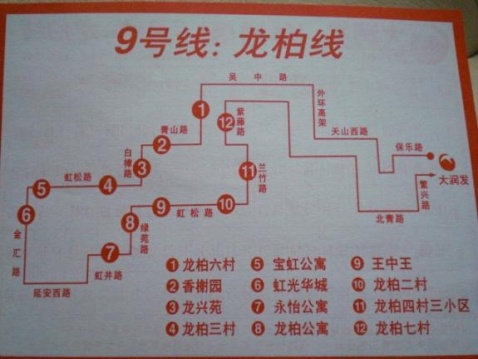DOUBLE-DECK ELEVATORS...
luyued 发布于 2011-05-01 22:47 浏览 N 次DOUBLE-DECK ELEVATORS:
SAVINGS IN TIME AND SPACE
by Marja-Liisa Siikonen
KONE Elevators/Elevator Supply Center, Finland
In double-deck elevators, two elevator cars are attached one on top of the other, so that passengers at two consecutive floors are served simultaneously. This increases the passenger-handling capacity of each elevator shaft. The double-deck elevator group requires less core space in a building compared to a single-deck group. This aspect is especially important in tall buildings, where the floor area required by the elevators is great. This paper analyzes the effect of a double-deck group control principle on the passenger service level when serving the landing calls. The trailing car principle is compared with a new allocation principle that is more selective in choosing the car to serve a landing call. The effect of a double-deck elevator group to the passenger service level is compared with a conventional single-deck elevator group. In different traffic situations, passenger waiting times and journey times are determined by simulation.
Introduction
Theoretically, double-deck elevators more than double the handling capacity during up-peak periods compared to the same amount of single-deck elevators in the same shafts. This happens if the double-deck elevators stop to every other floor and serve two adjacent floors simultaneously. A general approach is that from the main entrance floors, the lower deck serves odd floors, and the upper deck serves even floors. Passengers are guided to use escalators to select the correct deck when traveling to even or odd floors. As soon as the elevator stops to a call from an upper floor, car calls to any destination floor are admitted. A well-known approach in serving landing calls is that the landing calls are allocated to the trailing deck. The leading deck serves the calls that are coincident with the stops of the trailing car. A more efficient solution is to choose the landing call to the best deck. Best deck can be chosen, for instance, to minimize passenger waiting and journey times.
In this paper, elevator traffic simulations are used to investigate the performance and passenger service capability of double-deck elevators. The modern double-deck control is described and compared with the trailing car principle. The double-deck group service is compared with a single-deck group with different traffic patterns. The elevator groups are chosen so that they have equal up-peak handling capacities. In the simulated examples, the shaft sizes, i.e., the space required by a single-deck elevator and by a double-deck elevator, are different.
Traffic Profiles in Office Buildings
Passenger traffic profiles have been measured in high-rise buildings by the TMS9000 group control system (Siikonen et al. 1993). A typical traffic profile of one day is shown in Figure 1. The profile was measured in a single-tenant office building. The traffic profile consists of incoming, outgoing and inter-floor traffic components. The inter-floor traffic component shows the traffic between the floors. In the figure, y-axis shows the number of passengers in percent of the population that have used the elevators in a five-minute period. According to the figure, the traffic varies from zero to nearly 12% of the population in five minutes throughout the day. According to several measurements in office buildings, the traffic is often most intense during the lunch hour. The sharpness of the peaks in peak traffic periods depends on the working hours in the building. In a single-tenant building with fixed working hours, the up-peak period is the sharpest. In an office building with diverse companies and flexible working hours, the traffic peaks are the lower and smoother.
Planning of a Double-Deck Group
When defining the number, speed and size of double-deck elevators, the up-peak handling capacity and interval of the elevator group is calculated. Conventionally, the up-peak situation is considered as the worst case for the elevator handling capacity. In up-peak, cars are filled already at the entrance floors, and they are forced to serve all the car calls in sequence. In traffic situations other than up-peak, the handling capacity with the same passenger arrival rate is not as critical, as car load factors are smaller with the same passenger arrival rate. Elevators can load and unload simultaneously at the floors and have fewer car calls than in up-peak. Thus, the up-peak handling capacity usually determines enough handling capacity considering all traffic situations.
The criteria for the up-peak handling capacity is adjusted according to the type of the building. A typical planning criteria for an office building in up-peak is that the elevators should be able to handle at least 13% of the population in five minutes with an 80% car load factor. The interval should be below 35 seconds to guarantee short passenger-waiting times. In a single-tenant office building with common working hours, there is a lot of inter-floor traffic, and the handling capacity limit must be higher, for instance to 16% of population in five minutes. Shuttle elevators have no difference in handling the traffic in up or down direction since there are only two or a few stops. During the lunch hour, the traffic is mostly two-way. The evening down-peak is theoretically a worse traffic situation for the shuttle elevators than the morning up-peak, as local elevators can transport about 1.5 times more passengers in down-peak than in up-peak (Schr?der 1984). Thus, the handling capacity of shuttle elevators should be planned according to the down-peak situation, not according to the up-peak as the local elevator groups.
The equations to calculate the handling capacity of the double-deck groups assume that the elevators stop at every other floor in up-peak (Peters 1997). If the served floors remain the same during all the traffic situations, the up-peak criteria provides enough handling capacity and short waiting times also during the lunch hour and the evening down-peak. If the number of served floors is increased in some traffic situations, i.e., if both-cars serve all floors, the handling capacity decreases, and waiting times may become critical.
Double-Deck Control
Control Principles
In high-rise buildings, passenger elevators are combined in one bank to improve the service level. Any of the elevators in group can serve a given landing call. If up and down call buttons are used, elevators can collect the calls in both directions. In collective control, the elevators serve the calls in a sequence stopping to the nearest call in the car travel direction. When all calls have been served, the car moves to the furthest call in the opposite direction and reverses the elevator direction.
In double-deck controls, a well-known approach is that the trailing deck allocates the landing calls. The leading deck serves the landing calls that are coincidental with the trailing deck. The efficiency of the double-deck control can be measured by the number of coincident stops. In a coincident stop, at least one person in each deck will enter or exit during the stop. "Figure of Merit" (Kavounas 1989) is a measure to show the number of stops that were coincident to both decks in respect to all stops of the double-deck elevator. In a good system, the value is assumed to be 50% or over, during the morning up-peak.
In a modern sophisticated control, artificial intelligence and fuzzy logic are used to find the best elevator and deck to serve a given landing call. The best elevator is chosen to optimize passenger waiting time, journey time or other selected optimization targets. The best deck is chosen so that the passenger journey times are minimized. The coincident calls in front and behind the allocated landing call are examined. In case of a landing call in front and behind the allocated landing call, the elevator stops so that the two eldest landing calls are picked. Journey time is optimized by selecting the deck for the allocated landing call so that as few new car call stops as possible are generated. Also, the car load factor for both decks is held more balanced, as with the trailing car principle.
Test Case
The collective control with the trailing deck principle is compared to the modern control, which chooses the best deck for the elevator. In this example, landing call time was used as the optimization target.
The advanced elevator traffic simulator ALTS (Siikonen 1991), was used in the comparison. The simulator uses the collective control principle where the landing calls are allocated to the trailing car, and the modern control described above. In the simulator, passengers are generated randomly in a defined building with a given arrival rate. Statistics of the passenger service level and elevator performance are analyzed from the simulated traffic events. In the graphs, the following statistical parameters are compared:
u Passenger waiting time - starts when a passenger enters a lobby and ends when he/she enters the car.
u Passenger journey time - the total time a passenger spends in an elevator system.
u Interval - the average frequency of how often a car leaves the lobby. Interval is obtained by dividing the roundtrip time by the number of elevators.
The roundtrip time starts when a elevator opens doors at the entrance floor and continues until the elevator has made a trip around the building and starts to open doors after returning to the entrance floor. The main definitions are shown in Figure 2.
The simulated building has 14 floors with an average height of 4.1 metres, and a population of 1,500 persons at the upper floors (125 persons at each floor). Even population distribution at the upper floors is assumed. The double-deck group has four elevators with 13/13 car sizes and a speed of 2.5 m/s. Door opening time is 1.7 seconds, and closing time is 2.5 seconds. Passenger boarding and exiting times are one second for both groups.
Figure 3 shows the Figure of Merit, and Figure 4 shows the average passenger waiting times for the down-peak. Figure of Merit has higher value with the modern control than with the trailing deck arrangement. With the collective control, elevators start to pick landing calls from the highest down-call, and they do not by-pass landing calls. The cars get filled already at the upper floors, and the lower floors get poor service. The number of landing calls and coincidental stops are smaller. With the collective control, the average and the maximum waiting times start to grow near to the up-peak handing capacity. The modern control can handle significantly more traffic by keeping the waiting and journey times low.
Test Environment
In the following, the effect of different traffic patterns to the passenger service level is compared with a double-deck group and a single-deck group using simulations. The modern double-deck control described in the previous chapter, and the TMS9000 (Siikonen et al. 1993) control for the single-deck group, are used in the simulations.
In this theoretical study, single- and double-deck groups are selected so that they have equal up-peak handling capacity and total car sizes. The double-deck car size is half that of the single-deck elevator, to give same car capacity. In Table 1, the selected groups and their performance parameters are shown. Also, the up-peak interval happens to be the same during up-peak, which relates to an equal passenger service level with both groups. In this example, with the double-deck group, there is about 50% saving in the elevator core space.
Up-Peak
In up-peak situations, all the passengers arrive to the main entrances and travel to the upper floors. In a double-deck group, passengers arrive with the same arrival rate to both entrance floors. Passengers taking the upper deck travel to even floors, and passengers taking the lower deck travel to odd floors. For a single-deck group, there is only one entrance floor with twice the arrival rate of one entrance floor in the previous case.
Figure 5 shows the average intervals, and Figure 6 shows the average passenger-waiting times and journey times for the single-deck group and of the double-deck group. The interval values for the double-deck elevators are slightly longer, as only four elevators serve the floors, compared to six elevators in the single-deck group. According to Figure 6, the average passenger-waiting times for the double-deck group are also longer than for the single-decks with passenger arrival rates below the handling capacity. Passenger-waiting times of both the elevator groups start to grow when the car load ratio exceeds about 80% which is the up-peak handling capacity limit. Average passenger journey times are shorter with the double-deck elevators. This is due to the reduced number of stops during up-peak with the double-deck elevators. The roundtrip times are then shorter compared to the single-decks with the same passenger arrival rate.
Down-Peak
In evening down-peak, the passengers arrive at the upper floors and travel to the entrance floors. Double-deck elevators load passengers from adjacent floors simultaneously. An elevator by-passes a landing call when the car load factor in either of the decks exceeds 80%.
According to the simulation results (Figure 7), average waiting times with the single-deck elevators are shorter than with the double-deck elevators. Roundtrip times with both the groups are about the same, and the interval of the single-deck group is shorter. Waiting times of the double-deck group start to increase already when the passenger arrival rate exceeds 15% of the population in five minutes. Also, the car load factor starts to increase at that point. With the single-deck group, the average waiting times remain low until the passenger arrival rate exceeds about 20% of the population in five minutes. If the double-deck elevators had stopped to every other floor also during the down-peak, the handling capacity would have been close to the handling capacity of the single-deck group.
The average journey times with both the systems are close to each other even with high passenger arrival rates. The probability that the car load factor of either of the decks exceeds 80% is greater with double-deck elevators than with single-deck units. The double-deck elevators by-pass landing calls more easily during heavy traffic than the single-deck elevators, which shortens the roundtrip time. As a consequence, the time a passenger spends inside the car (ride time) becomes shorter than with a single-deck elevator, which balances the journey times.
Lunch-Hour Traffic
Elevator traffic measurements in single-tenant office buildings have revealed that the traffic consists of a combination of incoming, outgoing and inter-floor traffic. In the lunch-hour simulations, a typical situation with 40% of incoming, 40% of outgoing and 20% of inter-floor traffic was used.
According to Figure 8, the situation is similar to the down-peak traffic. Average waiting times with double-deck elevators are longer and start to grow when the passenger arrival rate exceeds about 15% of population in five minutes. Average journey times are close to each other even with high car load factors.
Conclusion
In this article, the Figure of Merit was found to be a good method of comparison between two double-deck control systems for a down-peak situation. The Figure of Merit is affected by the building size, the passenger traffic distribution floor by floor and the passenger arr
- 06-04· 如家七斗星商旅国贸店-南
- 06-03· 金太阳认证
- 06-03· 远望
- 05-31· 本全场简介
- 05-31· 新汕大图书馆
- 05-28· 什么是佳印名片设计器
- 05-28· 免费名片设计软件淘宝网
- 05-28· 佳印网 牛刀小试
- 05-27· 《今日海阳》架起与家乡
- 05-27· 即墨海阳跨海大桥
- 05-27· [2010-11-11]富洲艾森娜庄园
- 05-27· 第一次登顶珠峰(上)|
- 05-27· 奥园五期--富洲新城水电图
- 05-27· 富洲新城首期“国际专家
- 05-27· 富洲周边搜食记
- 05-27· 富洲酒店
- 05-27· 南昌富洲饭店保安部经理
- 05-27· 泽州东阐方村 养母与脑瘫
- 05-26· 2011-01-14
- 05-26· 2009-09-04








![[图]翠景花园130㎡豪装3房](http://www.okpinpai.net/uploads/userup/3/842861612265.jpg)

